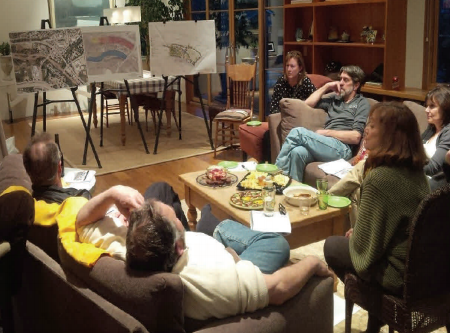
The basis of CSEPP’s approach to social service delivery is ensuring that social service program development is grounded in existing cultural systems of communication and support. With citizens as active partners in program development, they will offer an expanded set of opportunities to accomplish your organizational mission. Additionally, our clients can better predict project success and gauge efficacy of program implementation after a thorough community description is undertaken. Our Discovery Process identifies informal networks that exist in all communities.
By communicating with residents through existing pathways of trusted communication, client program elements “match the culture” by reflecting the social reality of residents. Not only can clients enhance existing program implementation by embracing the informal mechanisms of communication and support but new programs can be planned to integrate the issues of citizens with the management concerns of the sponsoring organization. CSEPP’s experience facilitating this approach to citizen-driven planning has resulted in more effective program deployment with lower long-term costs.
The following sections provide examples of how CSEPP applies its community engagement principles to enhance social service delivery:
West Medford, OR Revitalization
CSEPP principals worked with the West Medford Community Coalition (southern Oregon) in mobilizing residents to improve local conditions. These were low-income residents uncomfortable in public meetings but by working through their communication system, significant progress was made in reducing blight, eliminating drug houses, integrating Latinos into Neighborhood Watch, helping schools be more accommodating of families’ needs, getting renters to become first-time home buyers, the creation of youth programs, and many more. CSEPP implemented an Issue Management program that not only enhanced the ability of local residents to make civic government work for them but also the capacity of the city to recognize and respond to changing social conditions.
Local ownership of community services
CSEPP worked with social service delivery agencies in the 1960s and 1970s on the War on Poverty to realize the goal of “maximum feasible participation of the poor.” By connecting to the existing informal networks in a community, CSEPP consultants facilitated low income people to participate in the development of health care services, addiction treatment, and resettlement of Latino migrants in an empowerment process that included their participation in local social service agency boards and the local ownership of new facilities.
Core Strengths of the CSEPP approach:
More accurate prediction of project success
You can better predict project success and gauge efficacy of program implementation when community description identifies informal networks are contacted and program elements “match the culture” by reflecting the social reality of residents. A new program that integrates the issues of citizens with the management concerns of the sponsoring organization will be more successful. This approach also involves reveals indicators of community well-being that are culturally relevant by reflecting the social reality of the participants. Many times data is only available at the county level and more local sources of data are not as available. Local residents have skills in determining what should be measured and how it can be measured.
Development of organic citizen communication systems
Public meetings are not good drivers of action because they do not often match with how local residents solve their issues. By operating within informal networks, their gathering places, and the respected caretakers and communicators within the networks, action is organic and natural for the people. With the right timing and sequence, public meetings can serve to confirm understanding of common direction being undertaken, and more importantly, meetings serve as a celebration event for agreements already in place and actions already in motion.
Strengthened social capital
A community with high social capital has lower demands on formal support services. Using Social Ecology as an empowerment model, residents learn how to be engaged in their local community, how to make local government work, and improve the operation of their own household and neighborhood. By strengthening informal systems of communication and support, your long-term costs are reduced because litigation risks are dramatically lowered and project implementation unfolds with fewer roadblocks.
